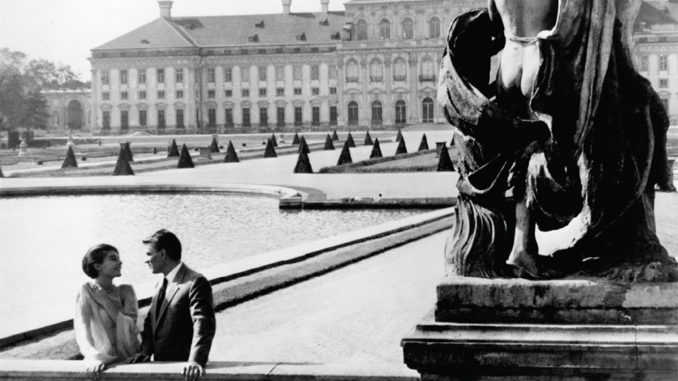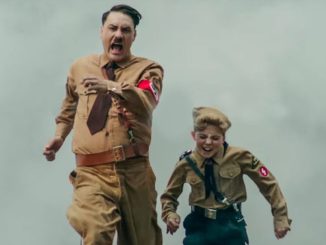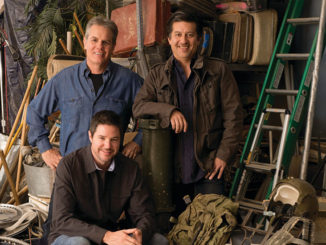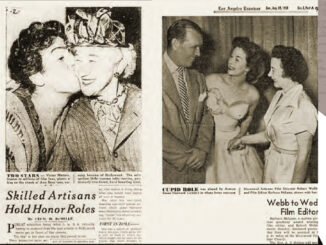
by Kevin Lewis
Alain Resnais’ Last Year at Marienbad (L’Année dernière à Marienbad) has been a puzzle ever since its premiere in Paris on June 25, 1961. It remains one of the most famous films made, perhaps because it is so elegant––and yet so infuriating; it has no beginning, middle or end. Although it was nonlinear, perverse and defiantly obtuse, it could not be ignored. It won the Golden Lion at the Venice Film Festival and changed the perception of film as art.
The film also had an immediate impact on fashion. Women in Europe and America, including First Lady Jacqueline Kennedy and Barbra Streisand, wore the “Marienbad coiffure,” which was a short, school-boy cut, parted on the right side and combed full across the forehead above the left eye. The Coco Chanel costumes were copied for department stores.
Resnais, who was part of the French Nouvelle Vague, was also a proponent of the nouveau roman (new novel) and persuaded like-minded novelist Alain Robbe- Grillet to adapt his short story La Jalousie into Last Year at Marienbad; the author received an Academy Award nomination for Best Screenplay. Marienbad evoked the French surrealist shorts of the 1920s, as well as the American avant-garde short films of the 1940s and ‘50s, but this was all very novel for a feature-length motion picture.
A deliberately elliptical work, the film is a series of dreamlike images around the theme of memory or its unreliability. At the très chic resort of Marienbad, a mysterious tuxedoed man (Giorgio Albertazzi) tries to convince a Chanel-clad woman (Delphine Seyrig)––who is either the wife or mistress of another sinister, tuxedoed man at the resort––that she had had an affair with him the year before. Although she denies ever having met him, he stalks her throughout endless corridors, mirrored rooms and gardens and past mannequin-like resort guests, much to her chagrin, until, finally, she is killed by her spouse/lover Or not. We never know if there actually was an affair, or who is lying, or who is completely insane––or who or what is real.
Although Last Year at Marienbad was nonlinear, perverse and defiantly obtuse, it could not be ignored.
Although the mesmerizing cinematography by Sacha Vierny is justifiably celebrated, the equally brilliant editing is often overlooked because of the film’s seamless technique and endless tracking shots. But it remains among editors Henri Colpi and Jasmine Chasney’s finest editing achievements. Unlike their innovative cuts back and forth from occupied France to post- Atomic Bomb Hirsoshima in Resnais’ previous film, the masterpiece Hirsoshima, Mon Amour (1959), Colpi (who just passed away in January at the age of 84) and Chasney’s editing in Marienbad is infinitely more subtle. They imbue the inanimate chairs, draperies, abandoned wine glasses and chandeliers with the same emotional and psychological significance as the dreamlike, detached characters and the geometric, manicured gardens with their statuary.
The sound work by Guy Villette, working with a haunting pipe organ score by Francis Seyrig, influenced sound mixers and editors worldwide because the soundtrack was not used as traditional underscoring, but as a counterpoint to the drama. Atonal sounds and music were introduced to startle and disturb the viewer rather than complement the imagery. And speaking of images, director Stanley Kubrick was heavily influenced by the films of Resnais, and those endless, frightening corridors of Marienbad resonate in his The Shining (1978).
It’s no wonder that, 45 years later, film courses the world over include Last Year at Marienbad in their curricula; ultimately, the film’s intentional distortion of time, space and story is pure cinema, as full of meaning as our dreams––and just and as troubling.





